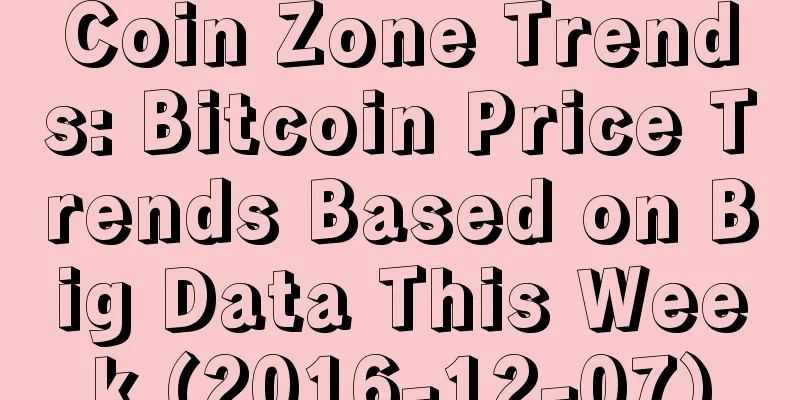[Update] Ethereum 2.0 countdown, daily changes in staked amount
![[Update] Ethereum 2.0 countdown, daily changes in staked amount](/upload/images/67e6992aa4c97.webp)
|
Recently, with the release of the Ethereum 2.0 deposit contract, users' enthusiasm for Ethereum has begun to heat up. The Ethereum 2.0 Beacon Chain is scheduled to be launched on December 1. In order to start, the storage contract needs to deposit a minimum of 524,288 ETH (16,384 validators). As of 14:30 on November 11, 52,993 ETH participated in the Ethereum 2.0 deposit contract staking, an increase of 2,592 from the previous day. The current staking rate has reached 10.1%, and at least 471,295 ETH are needed to launch the main network. It is reported that when the minimum staking requirement (5,244,288 ETH) is met, the staking reward can reach an annualized rate of 21.6%. When the staked ETH reaches 10 million, the staking reward is 4.9% annualized. Minimum requirements for participating in stakingThere are three minimum requirements to participate in staking: 1. Have at least 32 ETH; 2. A computer that meets the hardware specifications; 3. Network link. For detailed operations, please refer to "How ordinary people can run Ethereum 2.0 nodes at home" Participate in staking incomeTo incentivize people with ETH to participate in the network and become validators, validators will be rewarded for fulfilling their duties. Every 6 minutes, validators will receive a task, and if they complete the task, they will receive a reward. The reward will change in a certain proportion based on the total stake of the network. If the total staked ETH is low, the return received by each validator will increase, otherwise the return will decrease. The current recommended data given by ethhub.io is: This data is different from ethereum.org. According to the data from ethereum.org, when the minimum staking requirements (5,244,288 ETH) are met, the annualized staking reward can reach 21.6%. Cost and Risk of Participating in StakingCalculate costs Users need to run at least a validator client and may also need to run a beacon node, which will generate computing resource requirements; Beacon Node: Phase 0 can be run on a Raspberry Pi 4 device, but Phase 1 may require more powerful hardware; Validator Client: One client can run thousands of validators; It is roughly estimated that the total cost of the beacon node and the validator client is about US$120 (about RMB 790) per year. Capital Cost Participating in staking requires at least 32 ETH (about $14,240, or 94,000 RMB). Until Phase 1, all 32 ETH will be locked on the beacon chain and cannot be withdrawn (verification can be stopped). Uptime and maintenance costs - If the user is online for more than 50% of the time (assuming normal network conditions), they can maintain their net profit. However, if they are not committed to increasing uptime in some form, they should not risk participating in staking. - If more than 1/3 of the network goes offline at once, and this situation lasts for more than 4 epochs (25 minutes), all offline validators will suffer a finality leak penalty. Code Risk There may be network-wide code risks at present, but these code bugs will be resolved through hard forks. Security Risks In addition to failures in the client code, users also need to ensure the security environment of the validator client (internet connection, operating system, hardware, etc.). If their validator client is hacked due to security failures, resulting in forced downtime or misbehavior, they will not be able to recover their funds. References: 1. https://launchpad.ethereum.org/ 2. The Initial Launch of Ethereum 2.0 3. The Economics of Ethereum 2.0 4. How ordinary people can run Ethereum 2.0 nodes at home |
<<: Will Biden's White House be friendlier to the cryptocurrency industry?
>>: Miners Migration: Bitcoin Hashrate Soars 42% in Two Days
Recommend
How to read the wisdom line in palmistry
The wisdom line is one of the three main lines in...
How to tell career success from the fate line in palmistry
Everyone knows that there are various lines on th...
Will you become a rich woman?
Will you become a rich woman? 1. People with a fu...
What does a mole on the temples mean?
Sideburns refer to the area where hair grows in f...
How does a woman with a mole crying for her husband affect her family fortune? Is her marriage stable?
Generally speaking, sometimes one person can make...
Russia's central bank tests stablecoins, Sichuan regulates Bitcoin mining
Author: Guosheng Blockchain Research Institute su...
A mole on the eyebrow indicates that you may be imprisoned in this life.
What does a mole on the eyebrow mean? In physiogn...
Biden administration report: Congress needs to pass stablecoin legislation as soon as possible and limit issuers to insured banks
This article is from CNBC, the original author is...
How is the luck of people with enlarged nose wings?
Nowadays, different people have different appeara...
Here’s what we need to know about Ethereum’s Istanbul hard fork (with a user guide)
Translator: ECN Ethereum China Editor's Note:...
What impact will Musk’s acquisition of Twitter have on Dogecoin?
Dogecoin Trends After Elon Musk's acquisition...
People with droopy eyes are born to be hardworking.
Is it good to have droopy eyes? The eyes are the ...
Mt. Gox's funding chain had already broken before it filed for bankruptcy
According to investigations, the Bitcoin trading ...
[Update] Ethereum 2.0 countdown, daily changes in staked amount
Recently, with the release of the Ethereum 2.0 de...
Success or failure based on facial features
Success or failure based on facial features Some ...




![[BCH Hash Power War on November 15] Frontline Report](/upload/images/67e6d6c522353.webp)




